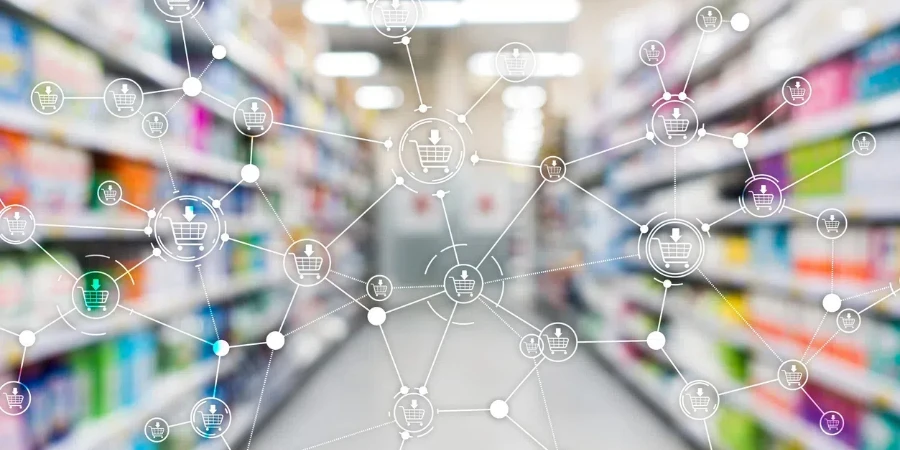Ian Cairns, Sales Director at TalkTalk Business, explores how AI-driven data collection is transforming high street retail.

Monitoring customer behaviour is nothing new in the retail world. Online shoppers are routinely tracked, often willingly consenting to cookies to continue browsing, fully aware that their every move is under scrutiny. In fact, online behaviour tracking has become so ingrained that it’s almost expected.
However, when it comes to physical stores, many consumers expect a far greater level of privacy. The idea of cameras monitoring their every step or tracking how long they linger by a particular product can feel far more invasive than having their clicks tracked online, even though the data being collected may be quite similar.
Furthermore, there are critical issues regarding data access and security. As data collection increases, retailers need robust network solutions that ensure accessibility while safeguarding this information from cyber threats.
Research conducted by TalkTalk Business, in partnership with Don’t Be Shy, reveals that 97% of Senior IT Decision Makers (ITDMs) in the retail sector believe that automated retail—encompassing everything from environmental sensors to till-free shopping—will soon become standard.
However, only 30% of frontline workers share this view. Whether this disparity stems from a lack of awareness about the potential benefits of new technologies or concerns over cybersecurity risks, it’s clear that smart technologies are becoming an increasingly common sight on the high street.
What does in-store customer analysis involve?
3D LiDAR: a new frontier in data collection
Among the tracking technologies gaining traction in retail is 3D LiDAR. Originally developed for autonomous vehicles, LiDAR presents a wealth of opportunities for innovative retailers.
LiDAR operates by emitting laser pulses and measuring the time it takes for the light to bounce back to the device. This process enables retailers to create precise 3D maps of their stores and monitor the movement of people within them. As a result, retailers can determine which aisles attract the most traffic, which shelves draw the most attention, and how customers navigate the store. LiDAR provides the raw data necessary for identifying high- and low-traffic areas and conducting detailed analyses of customer behaviour.
Compared to traditional video surveillance, 3D LiDAR delivers data that is more accurate, easier to interpret, and more secure. The data collected is anonymous and fully GDPR-compliant, making LiDAR a reassuring choice for both retailers and customers concerned with data privacy. By leveraging LiDAR, retailers can maintain data privacy and compliance while reaping the benefits of technological innovation.
A till-free shopping experience
The same 3D LiDAR technology used for in-store monitoring also plays a crucial role in retail automation, including till-free shopping. When integrated with video surveillance and weighted shelves, LiDAR enables retailers to track the items customers select and those they pick up but later return. As the customer exits the store, the selected items are automatically charged to their preferred payment method, and a receipt is sent to their phone.
Eye-tracking technology: insights from every glance
Advancements in technology are also allowing forward-thinking retailers to gather valuable data from customers’ eye movements.
By combining 3D eye-tracking technology with a depth-sensing camera, retailers can gain insights into what catches a customer’s interest, providing unbiased analytics on shelf attention. The technology tracks how long it takes for customers to focus on a specific product, the frequency of glances, and the duration of their gaze.
Each subtle eye movement reveals something about the customer’s perception of the product. This information can help retailers optimise store layouts, make key products more visible, or arrange shelves to draw attention to promotions.
This 3D eye-tracking technology can unobtrusively record visual attention from up to 1.3m (4.3ft) away. No glasses, VR headsets, or calibration is required—customers can shop as usual, unaware of the wealth of behavioural data being collected.
The power and responsibility of data collection
The rise of innovative tracking technologies is dramatically increasing the volume of data retailers can collect on in-store behaviour, ranging from seemingly anonymous footfall counts to detailed payment information. Given the enthusiasm from IT Decision Makers, it seems likely that high-tech in-store monitoring through LiDAR cameras and sensors will become the norm. This will enable retailers to collect ever more data, allowing for hyper-targeted, predictive analytics.
However, behaviour tracking—whether online or in-store—raises important questions about data access and security. Data and the insights it generates are only valuable if retailers can access them effectively. As businesses increasingly rely on AI-driven insights, it is crucial to have the necessary infrastructure and platform resilience to make optimal use of this data.
With such vast amounts of data being collected, the consequences of even a minor data breach could be severe, making strong security measures essential. Embracing solutions like Secure Access Service Edge (SASE) can help retail businesses extend their networking and security capabilities. SASE provides a cloud architecture model that integrates network and security functions, offering rich visibility, proactive insights, and comprehensive control over policies, access, and identity. This ensures that customer data remains secure.
Preparing for a secure and flexible future
As ITDMs push towards the future of retail, preparation is key. A cloud-based software-defined network allows retailers to optimise their stores securely, enhancing both customer and employee experiences with smart technologies while ensuring that collected data remains protected. This is a critical foundation for adopting new technologies in a way that is both efficient and trustworthy.
The retail sector is rapidly moving towards digital transformation, and businesses must ensure they have the right tools to embrace this change.
About the Author: Ian Cairns is the Sales Director at TalkTalk Business, a provider of comprehensive broadband solutions for companies of every size.
Source from Retail Insight Network
Disclaimer: The information set forth above is provided by retail-insight-network.com independently of Alibaba.com. Alibaba.com makes no representation and warranties as to the quality and reliability of the seller and products. Alibaba.com expressly disclaims any liability for breaches pertaining to the copyright of content.




